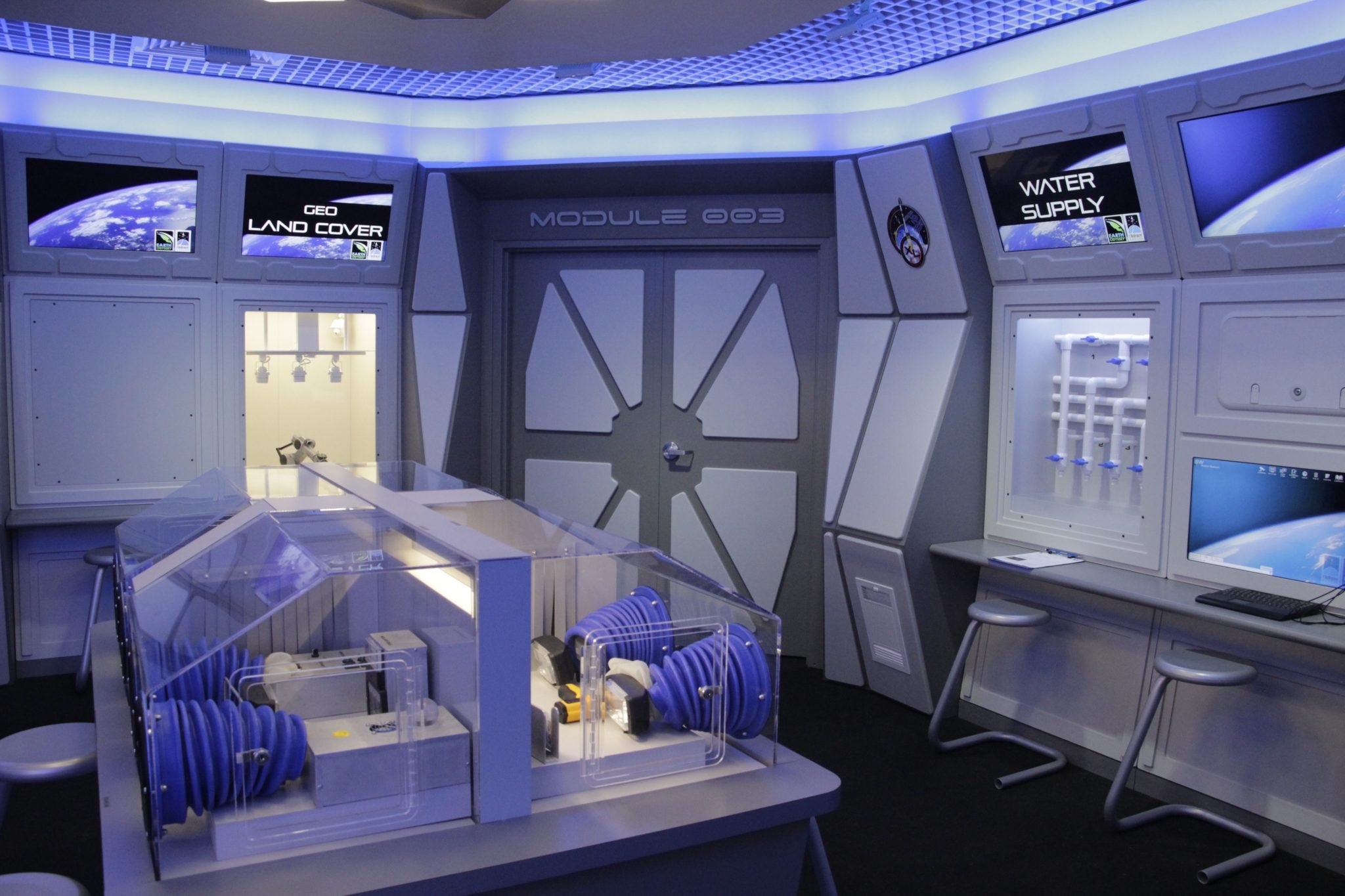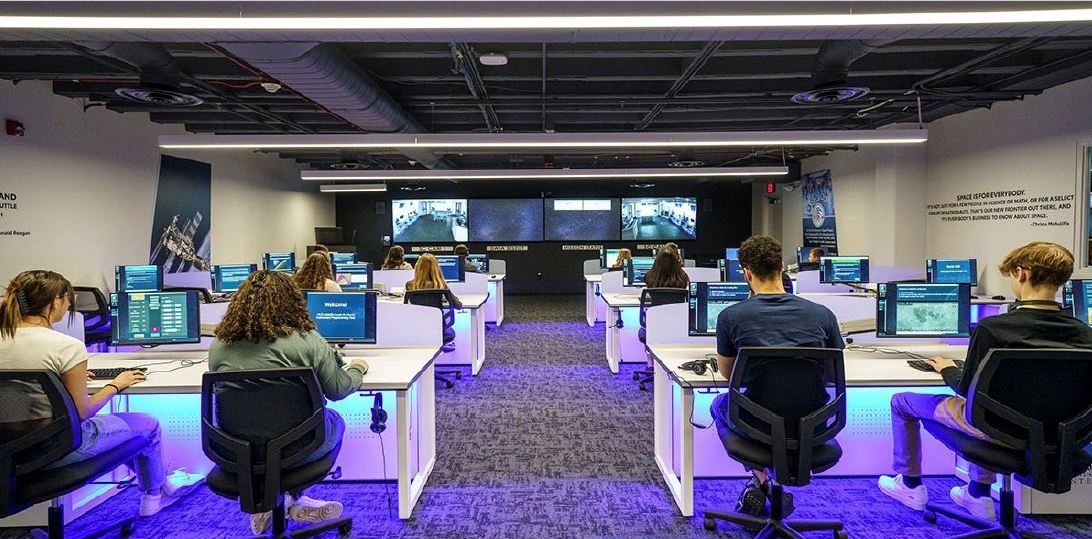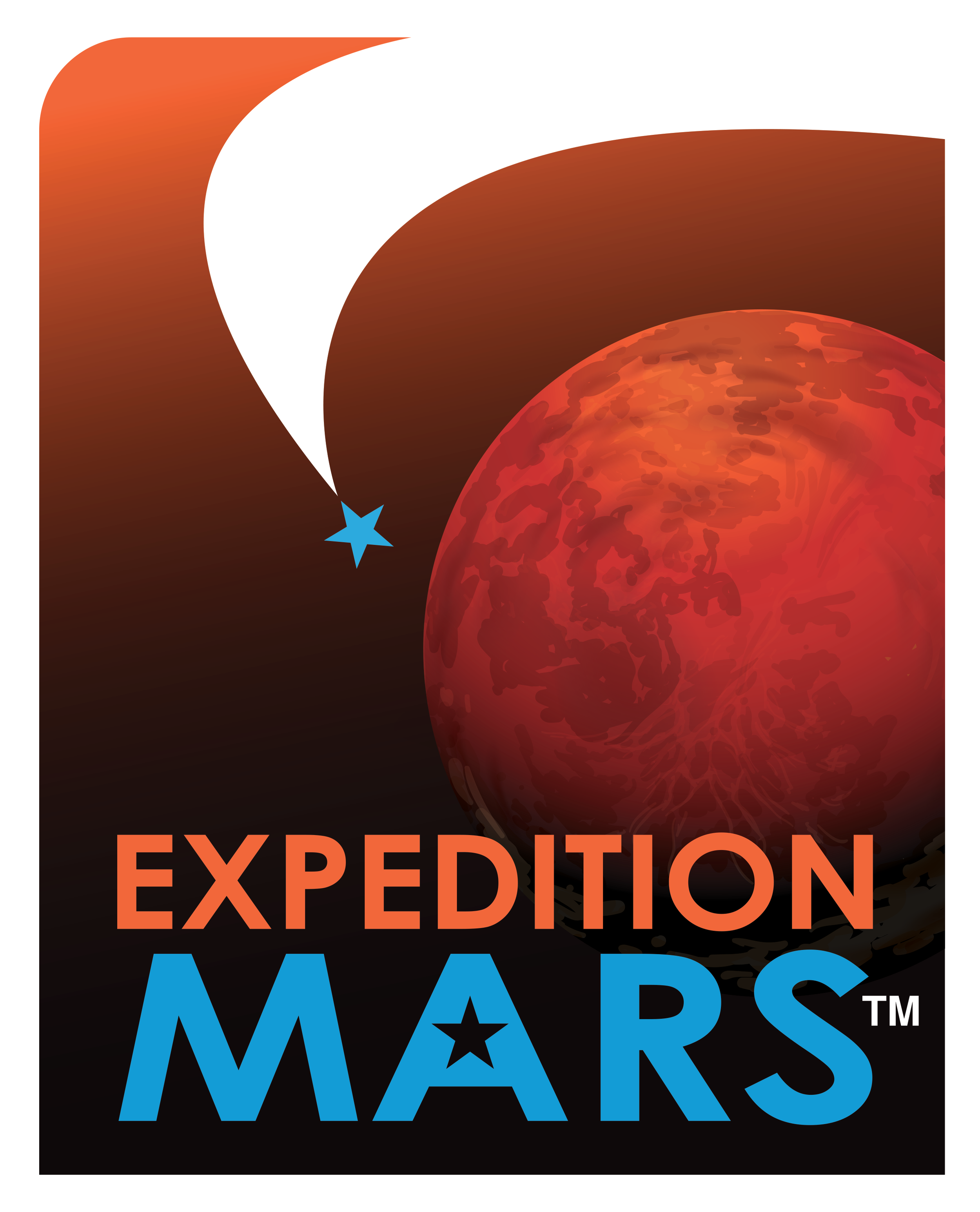IN-PERSON PROGRAMS
CHALLENGER LEARNING CENTER
Challenger Learning Center missions are hands-on STEM experiences! These simulated space-themed missions take place in a fully-immersive Briefing Room, Space Station, and Mission Control led by trained Flight Directors.
Surrounded by technology, each student plays a unique role in the mission as the team completes assignments, manipulates hands-on labs, and copes with simulated emergencies. Teamwork is crucial! If one member fails to complete a job, the entire mission can be put at risk. This differentiated approach allows for a truly personalized learning experience where students apply critical, scientific knowledge to real-world scenarios.
Challenger Learning Centers fly students on a variety of space-related missions. Aligned with National Education Standards and informed by real science data, Center missions excite students about STEM, introduce students to careers in these fields, and help students build important 21st Century Skills like critical thinking, problem solving, and collaboration.
MISSIONS
Number of students served by one mission: 20 to 36 individuals
NOTE: Older students and adults are welcome to fly CLC missions in our new simulator!
Expedition Mars
Grades 5-9
The year is 2076. A handful of facilities have been established on Mars: a greenhouse, a mobile geological survey base, and a centralized research habitat. The primary human habitat is not on Mars, but on one of its moons, Phobos. A Spacecraft regularly ferries astronauts and scientists between the base on Phobos and the surface of Mars. The Spacecraft also carries parts to build a remotely operated vehicle (ROV) to continue the search for evidence of life and water. However, when crew members discover an imminent threat to their Spacecraft and the Martian surface facilities, they must act quickly to save their stations, their research, and their lives.
Brochure | Educational Standards
Lunar Quest (starting May 2024)
Grades 7-9
NASA recently launched a rover (ROV) to the Moon to explore new areas and collect critical scientific data. However, the ROV lost power before any of the findings were sent back to Earth. A faster and more reliable process to gather this type of information is needed. The result is a new directive from NASA — human astronauts will return to the Moon! A team of astronauts must board a Spacecraft and launch to the Moon in search of a long-term habitat on the Moon. A team of scientists and engineers are stationed in Mission Control on Earth to command and assist the astronauts. Once the Spacecraft crew successfully lands on the Moon, they must deploy a Lunar Exploration ROV to identify a suitable location for a sustainable long-term human habitat. However, when the crew receives troubling readings from below the Moon’s surface, the two teams must work together and make critical decisions to turn a potential catastrophe into NASA’s finest hour!
Brochure | Educational Standards
Operation Comet
Grades TBD
With a large Comet passing close to Earth in a short period of time, the Space Station crew has the chance to send out a robotic probe to study this Comet. The study could be groundbreaking, but goals quickly change when it is determined that the single Comet has broken apart into a second comet and that is on a direct collision course with Earth. The team must quickly reengineer their robotic probe so that it can stop the second comet and complete their new mission objective, to save the world.
Earth Odyssey
Grades TBD
A recent coronal mass ejection has destroyed a vital space satellite responsible for gathering key Earth science information. Working together, the team at Mission Control and another aboard the Space Station, must build a new micro satellite to replace the one lost. However, traveling into orbit during this time of increased solar activity poses risks of its own.
PLANETARIUM
The new FSU Planetarium features a pair of ultra-high contrast laser phosphor projectors, resulting in dramatically increased picture quality for both night sky scenes and fulldome films! Each show's sound effects and music are driven by a brand new 5.1 digital surround sound system that has been custom designed and professionally engineered for our dome. New content offerings include the classic night sky tour paired with a film, as well as opportunities for students to directly interact with content on the dome and become participants in the show itself.
FULLDOME FEATURE FILMS
In Saturn’s Rings
Click to learn more
Big Astronomy
Click to learn more
We Are Guardians
Click to learn more















